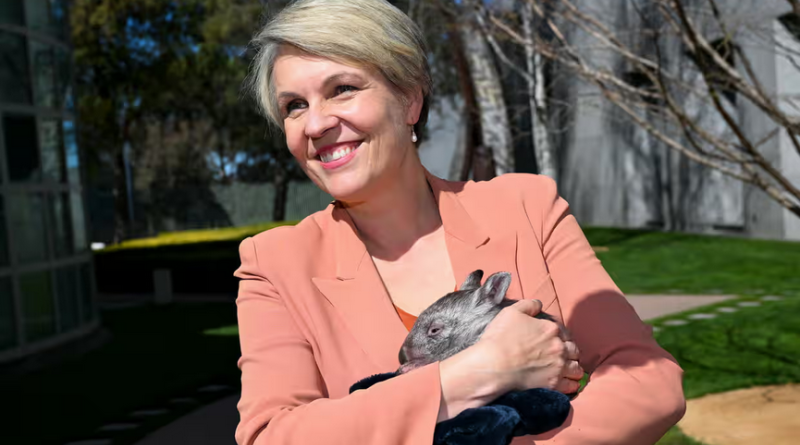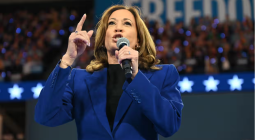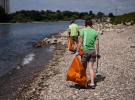The environment was meant to be ‘back on the priority list’ under Labor. Instead we’ve seen a familiar story

Federal environment minister Tanya Plibersek will next month host what has been billed as a ‘global nature positive summit’ in Sydney. Photograph: Lukas Coch/AAP
It wasn’t supposed to be like this. Back in the heady new government days of July 2022, Tanya Plibersek told the National Press Club that change was coming for environmental protection in Australia after a decade of disaster and neglect.
Releasing the five-yearly state of the environment report, which the previous Coalition government had received months earlier but put in a drawer until it was turfed from office, the new environment minister said it told a “story of crisis and decline in Australia’s environment”.
Plibersek stepped through some of the key messages. Australia is one of the world’s deforestation hotspots, clearing 7.7m hectares of threatened species habitat – an area larger than Tasmania – this century. More than 90% of this had been cleared in small parcels without any reference to national environment laws.
The overall trend of environmental health was poor and deteriorating, with abrupt changes in ecological systems over the previous five years. Australia has lost more than 100 species to extinction and more mammal species to extinction than any other continent.
The report noted the World Economic Forum’s conclusion that environmental degradation was a threat to humanity that could “bring about societal collapses with long-lasting and severe consequences”.
Plibersek declared Australians had voted for the environment in 2022, she had heard the message and there wasn’t another minute to waste. She would aim to develop new nature legislation, including “clear national environmental standards with explicit targets around what we value as a country, and what the laws need to protect”, in 2023.
“I won’t be putting my head in the sand,” she said. “Under Labor the environment is back on the priority list.”
Given the entrenched failures she inherited, including a gutted environment department and continual underfunding of nature protection, it was an ambitious promise. But Plibersek was a senior minister and a proven communicator with a significant public profile. Maybe this time would be different.
More than two years on, that hasn’t proven the case. There have been moments of modest progress but the Albanese government has not lived up to the minister’s early rhetoric
Instead we have seen a familiar story. The government accepted the recommendations of a review by former consumer watchdog Graeme Samuel and convened a consultation process with environment and industry groups about the design of the laws, arguing they had to agree before things could progress.
In a development that should surprise no one, they didn’t. The promised legislative overhaul has been delayed indefinitely and won’t appear before the election.
The scale of funding needed to restore and prevent ongoing environmental degradation – Plibersek acknowledged in her 2022 press club speech that experts have put it at more than $1bn a year – isn’t on the horizon through public or private means.
The government has been subject to relentlessly one-sided attacks from mining and big business interests and at least two major news media companies for contemplating even limited changes to help nature.
Seven West Media’s West Australian, in particular, has relieved itself of the journalistic obligation of holding the mining and resources sector accountable for what it says and does, instead acting as an unfiltered industry mouthpiece. Last week it used its front page to call federal Labor an “enemy at the gate” that had declared “war on the west”.
The Coalition, which needs to win big in the west to have a chance at being returned to government, has embraced this stance. Peter Dutton told the minerals week conference he will be the industry’s “best friend” if he becomes prime minister by removing “regulatory roadblocks” and halving the time it takes to approve developments.
This position doesn’t necessarily have to be completely at odds with improving nature protection but it plainly is when the crisis in nature is dismissed without evidence. Dutton told the mining conference: “Nobody here in this country or, indeed, around the world could argue that we have inadequate environmental protections.”
Of course, many people with far more expertise than the opposition leader do argue this. And they have evidence to back it up.
More than 2,200 threatened species are listed as being at risk of extinction, and that number has been rising rapidly. Nineteen ecosystems across Australia and its territories have been assessed as showing signs of collapse or near collapse. The risk of mass extinctions this century is documented and real. Pretending the problem doesn’t exist won’t make it go away or stop it badly affecting people and wildlife in the decades ahead.
The failure to take the environment seriously and to mostly consider it an issue for Greens’ voters is embedded deep in Australian public life.
It was evident when Anthony Albanese gave the environment portfolio to Plibersek, an internal rival, at least in part as a form of political purgatory. It was evident during the federal cabinet reshuffle, when senior journalists suggested Plibersek was wasted on the environment and should be moved somewhere other than what was dismissed as “cuddling koalas”.
It is evident in the government’s current position, which is owned by Albanese and the rest of the cabinet as much as Plibersek. Labor has split what it calls its “nature positive law reforms” into three stages. The stage now before parliament would create Environment Protection Australia, a national EPA, to assess development proposals and enforce the law and a second body to improve environmental data collection.
An EPA has been a long-fought-for goal of nature campaigners aware that under current laws, decisions are largely left to the whims of the minister of the day. It may yet get up but as of Monday it looked to be in trouble.
Albanese has intervened to reject the idea of doing a deal with the Greens and other crossbenchers who want changes that, to many people, would seem the logical domain of nature laws – better coverage of native forest logging and the inclusion of climate change as an issue that should be considered when developments are assessed.
The prime minister was once in favour of the latter. Back in 2005 he introduced a private member’s bill for a “climate trigger” against which projects would be measured. He now rejects it, arguing that existing climate legislation is enough. He has also told the West Australian he would consider the EPA’s role being limited to compliance.
His preference is to do a deal with the Coalition that would limit the EPA’s powers, which is what the mining industry wants. Small problem: the Coalition is led by a man who thinks an EPA is unnecessary.
This paints a pretty grim picture for nature, wherever things land.
It also creates a potential headache for Plibersek, who next month will host what has been billed as a global nature positive summit in Sydney.
The summit was announced in a different time – back in the ambitious days of 2022. It’s unlikely the minister imagined then that she might have to turn up without anything much nature positive to say.






